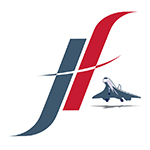NEW: Quick Note feature for Jacobson Flare iPad users with iOS 15.1
NEW: Quick Note feature for Jacobson Flare iPad users – with OS 15.1
Our supporters who downloaded the original versions of the Jacobson Flare App for the iPad (only) will recall a useful facility within each JF calculator. Called ‘my notes‘, it was designed to facilitate the development of a personal database by pilots, for the one-off flare calculations for each airplane type they flew and for a record of the aim point comparisons between ILS/PAPI/T-VASIS aim points and the correct visual aim point for their airplane type. (Remember, if these are the same, it is only by coincidence!)
Regrettably, our current version of the JF App cannot incorporate this feature.
However, Apple’s latest iPad-specific iPadOS 15.1 has introduced, among other developments, a facility called Quick Note which enables the taking of notes on any app or screen – including the Jacobson Flare.
In addition, images and other content can be added to each note and, when collated, can form a user-specific database for JF users, as described above, but is even more flexible. (See image below, for Apple’s note)
We have created a couple of sample Quick Notes to illustrate the benefits that can be derived.
Once created, the notes appear in both the Notes and Quick Notes app folders, on the iPad and in the (iCloud-linked) Notes app folder on your computer. They can also be accessed, anytime, by swiping diagonally UP and LEFT from the bottom right corner of your screen; this includes editing a particular Quick Note, or creating an additional, new Quick Note.
The Quick Note title, heading, subheading and body hierarchy is formatted through the ‘Aa‘ button, at top right of the iPad keyboard panel.
We think you’d find this new feature flexible, useful and a bit of fun, too!
Wishing you many safe landings
Captain David M Jacobson FRAeS MAP
Would you care to experience that unsurpassed sense of accomplishment, derived from executing consistently beautiful landings, more often?
For starters, Download the FREE Jacobson Flare LITE, our no fuss/no frills introduction. Here we demonstrate, step by step, the application of the Jacobson Flare on a typical grass airstrip at Porepunkah, YPOK.
We invite you to browse the consistently positive comments on our Testimonials page. Many pilots, of all levels of experience, have downloaded our Apps. Read about their own experiences with the Jacobson Flare technique and the App.
Then download the COMPLETE Jacobson Flare app – for iOS. You’re already possibly paying $300+/hour to hire an aeroplane: You’ll recover the cost of the app, in just ONE LESS-NEEDED CIRCUIT. Moreover, you’ll have an invaluable reference tool, throughout your entire life in aviation.
Download the COMPLETE Jacobson Flare App for iOS devices now.
We invite you, also, to review our new, FREE companion app,
offering a convenient way of staying abreast of our latest blogs.
Download the Jacobson Flare NEWS App for iOS devices now.



















